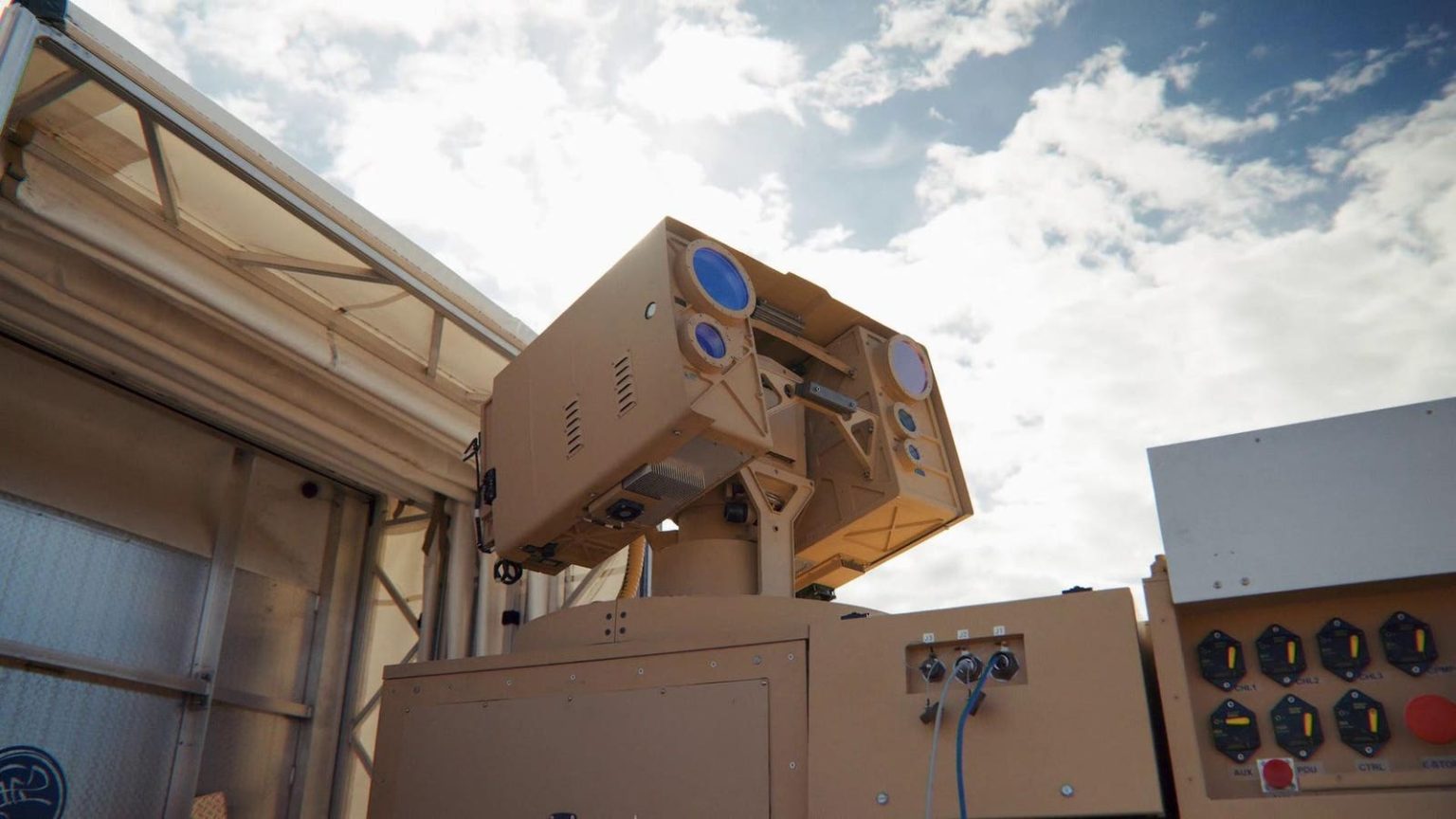High-energy laser weapons have promised so much for so long without delivering that you could be forgiven for doubting they would ever be useful on the battlefield. That day may finally have come. The U.S. Army will neither confirm nor deny rumors that one its lasers shot down a drone in action for the first time, but carefully-worded statements by officials make the story seem increasingly plausible.
[To clarify, Doug Bush, the Army’s head of acquisitions, recently told Forbes that the Army has brought down drones using lasers, but nobody in the Army will now confirm it].
Surprisingly, the secret of this successful zapping is software rather than hardware.
The First Shot In The Laser Wars?
I talked to Jonathan Moneymaker, CEO of BlueHalo, makers of the LOCUST laser system used in the U.S. Army’s Palletized High Energy Laser ( P-HEL), which “commenced operational employment” overseas in November 2022 and has been joined by a second system according to a company press release.
Moneymaker is not able to comment on whether LOCUST shot down a drone and refers me to the Army. But he notes that senior officers at the Pentagon have applauded LOCUST’s performance, as have others who were more directly involved.
“We have recently come across soldiers who served next to LOCUST, and who expressed personal thanks for the protection it provides,” says Moneymaker.
Shooting down a drone is the culmination of a Pentagon effort which has taken decades and cost billions of dollars, but, as Moneymaker explains, it has required modern technology make lasers effective.
Prologue: Fifty Years Of Laser Failures
The Pentagon has been enthusiastic about lasers since the moment they were invented. Before then, efforts to develop a radio-frequency ‘death ray’ had been futile, though they did lead to the invention of radar. The laser seemed to be just what the military was looking for. In 1962, just two years after the first laboratory demonstration of a laser, the Pentagon’s Project Defender was already aiming to shoot down Soviet missiles.
In 1963 the Cuban Missile Crisis added urgency to the laser work and President Kennedy uprated Project Defender as “highest national priority.” It took ten more years to produce a viable weapon, but on November 13th, 1973, Defender’s successor brought down a target drone at Kirtland Air Force Base in New Mexico. But the program never succeeded in maturing the technology into a practical weapon.
Since then there has been a seemingly endless parade of high-energy laser systems, all proving themselves by shooting down drones. Perhaps the most notable (and grandiose) was the giant YAL-1 Airborne Laser, a megawatt-class chemical laser mounted on a modified 747 airliner. This offshoot of the Star Wars program flew in 2002 and was retired in 2014 without ever reaching operational status.
Some systems did get into service, such as the XN-1 LaWS (“Laser Weapon System”) installed on the U.S. Navy amphibious warfare vessel USS Ponce for field testing in 2014. But although it was cleared for action while the vessel was in the Persian Gulf, LaWS was not used in action, and a review suggested LaWS was not suitable as a production system, due to its problems with tracking small targets and problems with beam coherence.
The U.S. military currently has some 31 different high energy laser programs. A few are now in the field to provide protection against the small drones used by the Houthis and insurgents in Iraq and elsewhere. Some have garnered bad reviews. A report on MSN on the Directed Energy Maneuver Short-Range Air Defense system carried on a Stryker vehicle states that “feedback from soldiers thus far indicates significant disparities between laboratory and test range results and actual tactical deployment.” The language used by the soldiers about these ‘disparities’ may have been less tactful.
By contrast, LOCUST seems to be doing exactly what it was designed to do.
The LOCUST ‘Special Sauce’
“What differentiates LOCUST from other lasers is that that we have world-class acquisition, pointing and beam control,” says Moneymaker. “Along with the proven ability to build reliable, fieldable systems.”
BlueHalo have long been specialists in laser communication for more than forty years; their systems are in orbit on the International Space Station and on US military satellites. This history has given them considerable expertise in beam control, the art of following a fast-moving target with a laser spot.
Moneymaker says that much of their hardware is built from commercial, off-the-shelf components rather than being custom built. The real technological advance is elsewhere.
“The ‘special sauce’ is that software beam control and the AI toolkit that sits on top of it,” says Moneymaker.
The control system is not just aiming a laser beam at the drone. It is specifically targeting it in the most efficient manner possible. This relies on an AI system that can accurately classify each drone type , then identify its weak spots where the beam will do most damage.
“If it has rotors, our system understands where the motors are and can target them,” says Moneymaker. “For larger drones it could be looking at a sawing mechanism to cut through a wing. If it is a more sophisticated type of drone we can engage the seeker head.”
The laser spot is around the size of a quarter, and keeping it tightly focused on a single point means it can burn through and destroy even larger drones – what the military call “Group 3” types – in a matter of seconds. Moneymaker says the beam will go through quarter-inch steel with ease.
Power though is less important than control. Megawatts are useless if you cannot keep them on the target.
“Everybody wants lasers with more power,” says Moneymaker. “But that is a mask for effectiveness. When you have good stability and control, you get a very effective engagement with less power.”
He has a point. In the original shoot-down in 1973, the laser was supposed to ignite the fuel tank of the target drone, and destroy it in a dramatic fireball. But the beam struck behind the fuel tank and melted control cables, causing the drone to pitch down and crash. By contrast, LOCUST can accurately target a specific point on a drone and destroy it. Rather than putting out enough wattage and hoping for a lucky hit, superior software finally makes high-energy laser weapons practical.
Layered Defence
Low-cost attack drones have become a fact of modern warfare. From kamikaze FPV racing drones in Ukraine to the Iranian Shaheds used by the Houthis and Russians, they are overwhelming defenses designed to cope with a small number of missiles. Such drones are available to everyone, including non-state actors. U.S. forces, able to count on air superiority since the Korean War, are not well-prepared to deal with aerial threats.
Lasers, with their endless ammunition and low cost-per-shot, are tailor-made to counter this threat. But Moneymaker emphasizes that the laser on its own is not a complete defence and forms part of an integrated, layered system of protection. This includes sensors, radio-frequency jamming, command and control systems plus other means of downing drones such as missiles — all technologies which BlueHalo are developing.
As encounters between drones and lasers become more frequent, we may find out more about their effectiveness. The U.S. Army may even give us the full story of the first laser kill one day. But with swarming drones on the horizon — Ukraine alone plans to build two million drones this year — tactical lasers are likely to be increasingly important for the survival of ground forces. It is good to know that, finally, they seem to work.
Read the full article here





